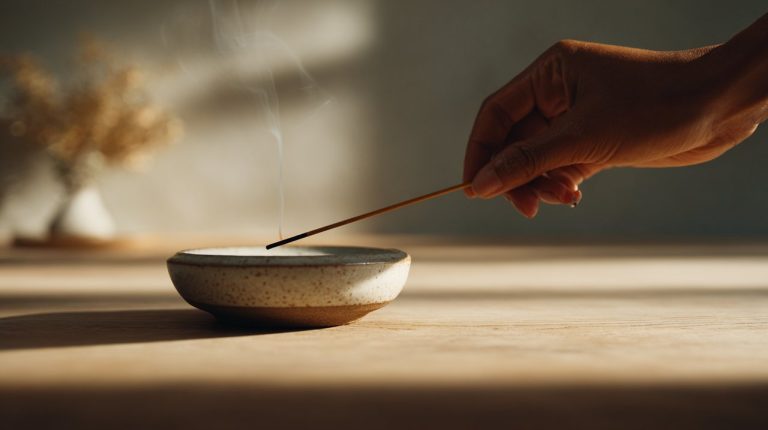Mantra Wheel Guide: How to Choose, Use, and Harness Its Spiritual Benefits
At first glance, the mantra wheel appears to be a wonderfully simple device. Yet, its gentle, continuous spin connects a physical motion with a profound spiritual purpose. What makes this seemingly straightforward mechanism such a powerful tool for cultivating positive energy and purifying karmic imprints? Understanding this unique synergy is truly key to appreciating its full potential.
The Mantra Wheel: History, Symbolism, and Sacred Practice
Rooted deeply in Tibetan Buddhism, the mantra wheel, often called a Mani wheel, is far more than just an artifact. It embodies a dynamic interplay between tangible form and spiritual intention, acting as a vibrant form of meditation that engages our body, speech, and mind. Its perpetual revolution beautifully symbolizes the ceaseless cycle of blessings and prayers.
Origins and Evolution: A Sacred Lineage
The concept of the mantra wheel stretches back centuries, woven into the very fabric of Tibet’s spiritual landscape. Initially, we saw forms like prayer flags, where mantras were inscribed to be carried by the wind, spreading their blessings far and wide. The development of the mantra wheel then offered a more direct and intentional way to activate these sacred prayers.
The practice is believed to have been introduced by the great Indian master Nagarjuna, evolving from simple wooden cylinders into the intricately crafted metal wheels we often see today. These early wheels frequently housed countless copies of the mantra “Om Mani Padme Hum,” transforming each spin into the recitation of myriad prayers.
Symbolic Resonance: A Universe in Motion
Every element of a mantra wheel carries significant symbolic weight. The central spindle, for instance, represents the axis mundi—the cosmic axis connecting heaven and earth. The wheel itself signifies the Dharma wheel, symbolizing the Buddha’s teachings and their continuous dissemination throughout the world.
Inside, the tightly wound scroll of mantras represents the vastness of sacred texts and intentions. The act of spinning embodies the continuous flow of positive energy and the purification of negative karma, much like a river constantly cleansing its banks as it flows.
The Mechanics of Intention: Physicality Meets Spirituality
The distinctive power of the mantra wheel lies in its ability to externalize and amplify our internal prayers. Unlike silent meditation or vocal mantra recitation alone, the mantra wheel actively engages a physical action that helps to focus the mind. Each rotation is considered equivalent to uttering the contained mantras aloud.
This synergy of physical movement and mental focus creates a truly unique meditative rhythm. While mala beads serve a similar purpose in counting mantras during recitation, the mantra wheel’s continuous spin offers a distinct and often deeply calming meditative experience. The physical act of spinning becomes a conduit for mental clarity, empowering the intention behind each rotation and transforming it into a potent spiritual offering.
Selecting Your Spiritual Companion: Types and Considerations
Choosing a mantra wheel is a deeply personal journey. It requires understanding the different types available and discerning what truly resonates with your spiritual path. The right wheel can truly become a lifelong companion in your practice.
Varieties of Wheels: From Handheld to Grand Temples
Mantra wheels come in various forms, each designed for different practices:
- Handheld Wheels (Mani-khorlo): These are the most common, perfect for personal, portable practice. They typically feature a small weight attached by a chain, making continuous spinning easy with a gentle flick of the wrist.
- Tabletop Wheels: Larger than handheld versions, these are often placed on altars or desks for more stationary practice. They frequently boast more elaborate and detailed craftsmanship.
- Temple Wheels: These massive wheels are found in monasteries and pilgrimage sites, often standing several feet tall. Pilgrims, sometimes collectively, spin them to generate immense merit for all beings.
Material and Craftsmanship: Enduring Quality
The materials used in a mantra wheel significantly influence its durability and aesthetic appeal. Common choices include wood, copper, brass, and silver. High-quality mantra wheels are typically crafted from durable metals like copper or brass, often beautifully adorned with sacred symbols and even semi-precious stones.
Equally important is the internal scroll, which must be carefully prepared and contain numerous repetitions of the mantra to ensure its spiritual efficacy. A well-balanced spin mechanism is also crucial, allowing for smooth, effortless rotation that enhances your meditative flow.
Personal Connection: Resonance and Intuition
Selecting a mantra wheel isn’t solely about its aesthetics or the materials it’s made from; it’s about finding a tool that genuinely resonates with your spirit. Take time to consider the energy and feeling the wheel evokes in you. Just as healing crystals are chosen for their specific energetic properties, selecting a mantra wheel also involves connecting with its inherent spiritual vibration.
Trust your intuition when making your choice. The wheel you feel drawn to is often the one best suited to support and deepen your unique spiritual journey.
Mastering the Practice: Using Your Mantra Wheel with Intention
Correctly using a mantra wheel involves more than just spinning it; it requires a mindful approach to truly maximize its spiritual benefits. Your intention, posture, and focus are paramount to a meaningful practice.

Proper Technique: The Art of the Gentle Spin
When using a handheld mantra wheel, hold it in your left hand. In Buddhist tradition, the left hand is often associated with wisdom. Spin it clockwise, which is the direction the sun moves across the sky and the direction of circumambulation around sacred sites. Maintain a gentle, continuous spin, allowing the momentum to carry the wheel naturally.
The speed of the spin is less important than its consistency and the pure intention behind each rotation. Avoid forceful or jerky movements, as these can disrupt the smooth, meditative flow you’re trying to cultivate.
Mantras and Focus: Cultivating Inner Stillness
While spinning the wheel, direct your mind to the mantra contained within, most commonly “Om Mani Padme Hum.” You can recite the mantra silently or aloud, synchronizing your breath with the spin. Visualize light and blessings emanating from the wheel, purifying negative karma and radiating compassion to all beings.
This focused intention helps to activate your chakra system, particularly the heart and crown chakras, fostering a deeper connection to universal energy. Each spin becomes a conscious act of prayer and purification, grounding you in the present moment.
Integrating into Daily Life: Consistent Devotion
The mantra wheel can be beautifully integrated into various aspects of your daily life. Use it during formal meditation sessions, while walking, or even during quiet moments of reflection. Consistency in your practice will significantly enhance its benefits.
Even a few minutes of mindful spinning daily can cultivate a profound sense of peace and deepen your spiritual connection. It serves as a constant, gentle reminder of your intentions and your commitment to the path of compassion.
Harnessing Profound Benefits: Spiritual Accumulation and Purification
The consistent and intentional use of a mantra wheel offers truly profound spiritual benefits, extending beyond personal well-being to encompass universal compassion.
Karma Purification: Cleansing the Spiritual Path
One of the primary benefits attributed to the mantra wheel is the purification of negative karma. Each spin, when imbued with sincere intention, is believed to cleanse impurities of body, speech, and mind. The continuous rotation symbolizes the turning away from negativity and towards enlightenment, much like a continuous stream washing away accumulated debris.
This purification helps to remove obstacles on your spiritual path, making the journey smoother and more conducive to inner growth. It is a powerful tool for spiritual cleansing, helping you to move forward with greater clarity and ease.
Cultivating Compassion: Expanding Inner Radiance
The mantra “Om Mani Padme Hum” is renowned as the mantra of Avalokiteshvara, the Buddha of Compassion. By focusing on this mantra while spinning the wheel, practitioners actively cultivate and expand their own capacity for compassion and altruism. Each rotation sends out waves of loving-kindness, not only to oneself but to all sentient beings.
This practice helps to gently dissolve self-centeredness and foster a profound sense of interconnectedness, enriching both the practitioner and the world around them.
Beyond Practice: A Continuous Spiritual Journey
The mantra wheel serves as a tangible and supportive aid on what is ultimately a continuous spiritual journey. It acts as a constant reminder of the impermanence of existence and the immense power of consistent, mindful effort. Similar to the protective qualities attributed to a red string bracelet meaning in various traditions, the mantra wheel offers a profound form of spiritual safeguarding, generating positive energy and dispelling negativity.
It also stands alongside other revered Tibetan artifacts, much like Dzi beads, as a symbol of deep spiritual heritage and protection. The wheel encourages unwavering dedication to the path of wisdom and compassion, gently guiding you towards greater understanding and ultimate liberation.
The mantra wheel, with its rich history and profound symbolism, truly offers a unique pathway to spiritual growth and karmic purification. By understanding its origins, selecting a wheel that genuinely resonates with your spirit, and engaging in mindful practice, you tap into a powerful synergy of physical action and mental intention. This ancient tool, when used with devotion, becomes a dynamic catalyst for cultivating compassion, wisdom, and a deeper connection to the sacred. Embark on this journey with an open heart, and allow the gentle spin of the wheel to guide you towards inner peace and profound spiritual benefits.
💡 Häufig gestellte Fragen
A mantra wheel, also known as a Mani wheel, is a Tibetan Buddhist artifact that embodies a dynamic interplay between physical motion and spiritual intention. Its primary purpose is to cultivate positive energy and purify karmic imprints by acting as a form of meditation that engages the body, speech, and mind. Each spin is considered equivalent to reciting the mantras contained within, symbolizing the ceaseless cycle of blessings and prayers.
The central spindle of a mantra wheel represents the axis mundi, connecting heaven and earth. The wheel itself symbolizes the Dharma wheel, representing the Buddha’s teachings and their continuous dissemination. The scroll of mantras inside signifies the vastness of sacred texts and intentions. The act of spinning embodies the continuous flow of positive energy and the purification of negative karma.
While mala beads are used for counting mantras during recitation, a mantra wheel offers a distinct and often deeply calming meditative experience through its continuous spin. The physical act of spinning a mantra wheel becomes a conduit for mental clarity and empowers the intention behind each rotation, transforming it into a potent spiritual offering, whereas mala beads primarily serve a counting function.
Mantra wheels come in various forms: handheld wheels (Mani-khorlo) for portable practice, tabletop wheels for stationary practice, and large temple wheels found in monasteries. When choosing, consider what resonates with your spiritual path. Materials like copper and brass are durable, and the internal scroll must be well-prepared. Ultimately, trust your intuition; the wheel you feel drawn to is often the best suited for your practice.
Consistent and intentional use of a mantra wheel offers profound spiritual benefits, including the purification of negative karma by cleansing impurities of body, speech, and mind. It also helps cultivate compassion and altruism by focusing on mantras like 'Om Mani Padme Hum,' fostering a sense of interconnectedness and radiating loving-kindness to all sentient beings. It acts as a tangible aid for spiritual growth and karmic purification.







